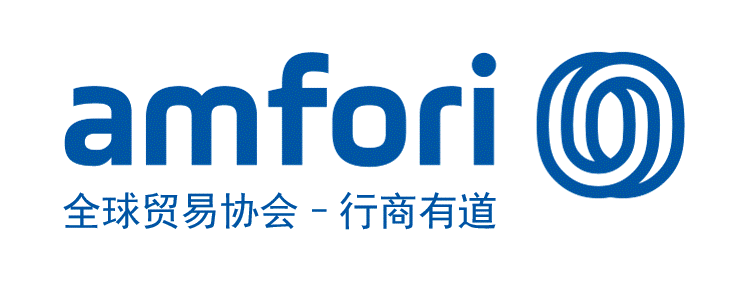How can green technologies facilitate 30·60 Goal?
2022-07-01GoldenBeeGoldenBee0


To achieve carbon peak and carbon neutrality as scheduled is the sure way to go towards high-quality economic and social development in China.
Achieving China’s 30•60 Decarbonization Goal requires both major technological breakthroughs and a green transformation of economic and social development. As the key driving force, green technological innovation not only provides technical solutions for low-carbon, zero-carbon and carbon-negative practices, but also promote the development of green and low-carbon industries.
The green and low-carbon industry is where the green technologies transform into practices, which can in turn lead the development of green economy. Technological innovation in this field can boost the transformation of traditional industries and the growth of emerging industries, foster new drivers for high-quality development, strengthen the resilience of industrial chains and supply chains internally, and promote the in-depth integration of digitalization, greenization and industrialization externally, thus providing support for the realization of the 30·60 Goal.
01 Promote green and low-carbon industrial transformation
Green and low-carbon industrial transformation can help resource-based enterprises to less rely on resource consumption and achieve sustainability. It also facilitates green, coordinated and sustainable development of regional industries and address the dilemma of “resource curse”. It can help save energy, improve efficiency and reduce pollution and carbon emissions, thus promoting the realization of 30·60 Goal.
Green and low-carbon transformation means that industrial development will no longer rely on high energy consumption, pollution and emissions. Instead, it will combine green and low-carbon technological innovation with industrial transformation and upgrading, promote the transformation from factor-driven to innovation-driven development, and drive high-quality development with green industries.
Green and low-carbon technological innovation is crucial to the steady progress in green and low-carbon industrial transformation.
At the micro level, green and low-carbon technological innovation covers the whole process of production, and boost the rapid and large-scale application and upgrading of green technologies, which can effectively promote the transformation of green and clean industries, improve resource utilization, and reduce greenhouse gas and pollutant emissions.
The middle level involves the green transformation of product supply and the rapid development of green industry. Green and low-carbon technological innovation can increase the supply of environmental protection equipment and low-carbon products, innovate green services, guide green consumption, and strengthen the basic research and improve the technological innovation system in the industry. It also can promote green and low-carbon transformation in traditional industries such as energy, engineering, transportation and construction, and the rapid development of emerging and high-tech industries.
The macro level is related to the overall transformation of economic and social development. Green and low-carbon technological innovation can not only generate a more high-end and green industrial structure, but also accelerate the low-carbon energy consumption and promote the recycling of resources.
02 Foster new driving forces for industrial development
To achieve carbon peak and carbon neutrality as scheduled, it is necessary to promote the application of innovative achievements and their balanced development among regions, fully tap the impetus and potential of green and low-carbon technological innovation, so that the green transformation of traditional industries can be realized and emerging industries can be cultivated, providing demonstration for the green transformation and development of the whole society.
To boost the shift from old growth drivers to new ones driven by green and low-carbon technological innovation, and promote the application of achievements to consolidate the foundation for scientific and technological innovation, we need to focus on cultivating market players with the capacity to support and drive innovation.
First, more enterprises with green and low-carbon technology should be cultivated. We need to promote integrated innovation of universities, research institutes and enterprises, strengthen protection of intellectual property rights, accelerate the development of green technology and management training, and promote the effective application of research achievements. We also need to establish a sound market-based allocation mechanism for innovation factors, create a supply system for green and low-carbon products with high added value and competitive advantages, guide green consumption, and strengthen the internal impetus for enterprises to develop green and low-carbon technologies.
Second, green and low-carbon industrial clusters should be built. We need to foster new drivers in high-tech, high-efficiency and low-emission fields to promote integration of green technology, investment and industry. We also need to strengthen regional cooperation, enhance knowledge spillover and promote industrial division and collaboration to fully utilize resources, sustain the vitality of innovation factors, and improve the efficiency of innovation systems.
Third, green transformation and upgrading of key industries and fields should be promoted. We should innovate production processes to reduce more carbon emissions, fully utilize solid waste, and enhance resource recycling. The effective control of carbon emissions in key industries such as steel, non-ferrous metals and chemicals, and key sectors such as energy, industry, construction and transportation, not only lay the foundation for decarbonization, but also help build a new industrial structure featuring green, low-carbon and coordinated development.
03 Enhance the resilience of the industrial chain and supply chain
The resilience of the industrial chain and supply chain not only provides a strategic opportunity to achieve 30·60 Goal as scheduled, but also shows an urgent need to smooth the industrial cycle, build a modern industrial system and enhance the resilience of economic development. This is a key measure to promote high-quality development of the real economy and reshape China’s industrial competitiveness.
In the national economic system, related industries are upstream and downstream of each other's industrial chainss, through which the decarbonization target and pressure will be transmitted. The smooth production links can accelerate the formation of a synergy of carbon reduction and a green production mode.
Carrying out green low-carbon technology innovation can solve problems in all procedures including production, supply, storage and sales, ensure security of supply chain, extend the industrial chain with more added value. All these measures help the industry chain and supply chain be more independent and controllable, clear bottlenecks in key areas, address the conflict between resource constraints and pollution reduction and decarbonization to smooth the national economic cycle.
Under the 30·60 Goal, full integration of the innovation and the industrial chain is essential for the resilience of the industrial chain and supply chain. The integration of various technologies and innovation factors can boost the development of relevant industries and control carbon emissions from the source. To further implement green and low-carbon technological innovation, enhance the resilience of industrial and supply chains and empower decarbonization, two directions should be taken into account:
First, make breakthroughs in “hard power”. Green and low-carbon technological innovation provides solutions for the weak links of industry chain and the technical bottlenecks. Innovation based on the utilization of resources can improve production technology and equipment, innovate the mode of production and recycle resources, in a way to smooth the industrial chain and innovation chain, build green and modernized industrial and supply chains, and conserve energy, improve efficiency and reduce pollution and carbon emissions at the same time.
Second, strengthen “soft power”. Green and low-carbon technological innovation can improve enterprises’ capability to manage carbon asset, and to gather, monitor and control carbon emission information. Improving capability to monitor and manage carbon emission data can help build trading markets including carbon emission rights and energy use rights, and the connection between market mechanisms will in turn increase the resilience of industrial chain and supply chain.
04 Further integrate digitalization and green development
To achieve 30·60 Goal as scheduled, green and low-carbon scientific and technological innovation should play a driving and linking role.
Further integration of digitalization and green development, and their linkage to green and low-carbon technological innovation, can contribute to decarbonization and the market-oriented allocation of data. The deep integration of digitalization and green development is reflected in three aspects:
First of all, emerging technologies such as big data, artificial intelligence and 5G are deeply integrated with green and low-carbon industries to help energy enterprises realize digital management, reduce energy costs and improve production efficiency. It can also help traditional industries be cleaner and more intelligent, and provide technical support for a clean, low-carbon, safe and efficient energy system.
Second, technologies such as big data, cloud computing and block chain are fully applied to build the whole life cycle of green low-carbon management, form the closed loop of supply, logistics, data and consumption management, improve statistical and monitoring system of energy consumption and carbon emissions in key high-emission industries such as electricity, engineering, construction and transportation, and promote the sharing and application of big data in energy conservation and emission reduction.
Finally, the market-oriented allocation of data is promoted. We fully tap the innovative value of data, and manage energy consumption in the whole process and predict demand more accurately through real-time collection of operation data. Being efficient, clean, low-cost and reproducible, data can optimize the traditional industrial structure and the innovation ecosystem, and improve the efficiency of green development.
However, due to the insufficient construction of green and low-carbon technological innovation system, we should also be aware that more efforts are needed to improve the system and mechanism, utilize innovation resources, strengthen the ability to innovate independently and apply achievements, to fully unleash the vitality and potential of green and low-carbon scientific and technological innovation.
Best Practices
- The 100-year brand — Air Liquide also has a sense of juvenile
- Beijing Public Transportation Corporation: Developing green transportation to build a harmonious and livable capital
- CGN: Building a modern factory in barren deserts and developing a new win-win cooperation model along “Belt and Road”
Upcoming Event

All the materials on the site “Source: XXX (not from this site)” have been reprinted from other media. They do not imply the agreement by the site.
All the materials with “Source: CSR-China Website” are the copyright of CSR-China Website. None of them may be used in any form or by any means without permission from CSR-China Website.
GoldenBee Official WeChat
Copyright © Csr-china.net All Right Reserved.
京ICP备19010813号










